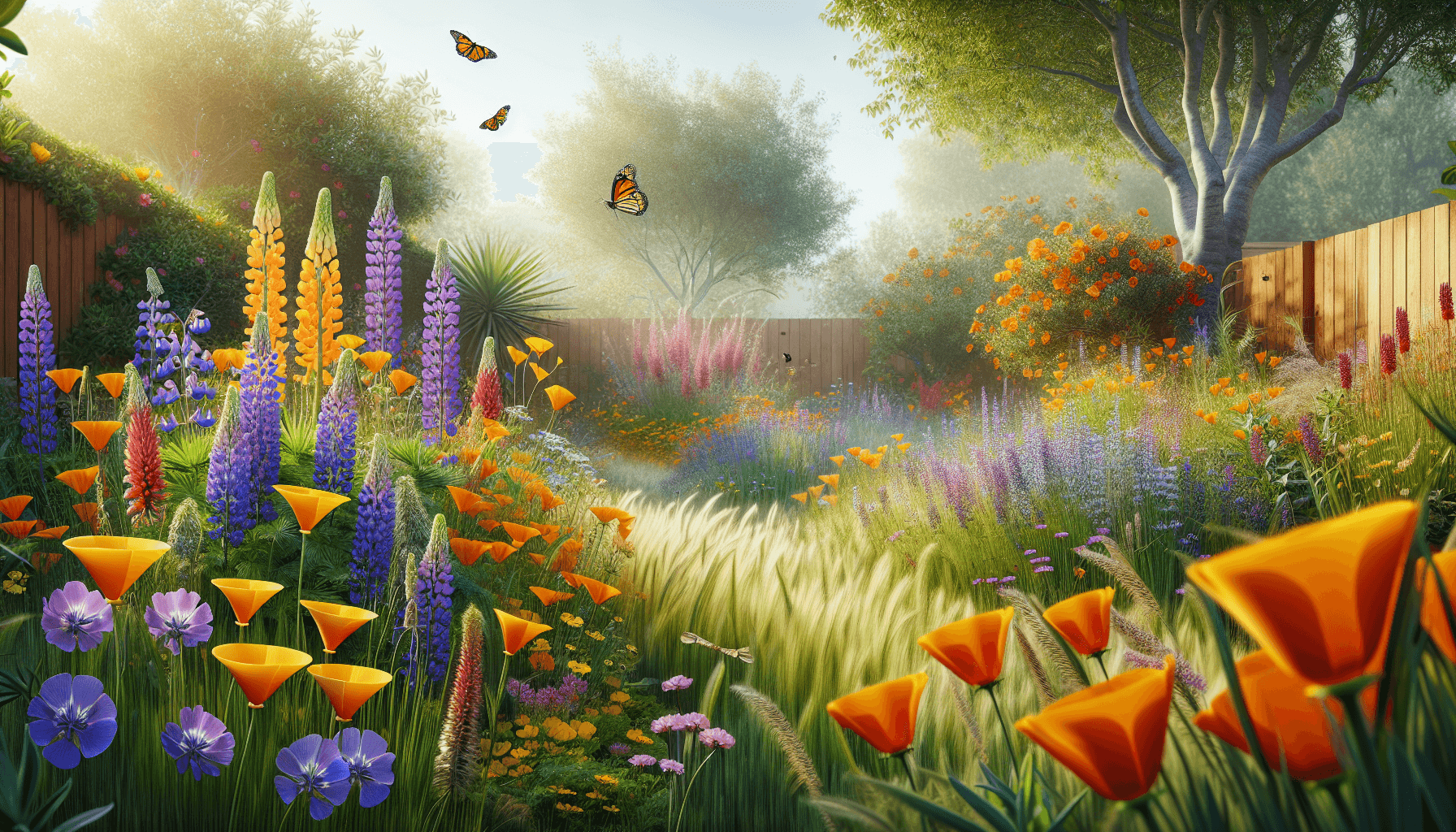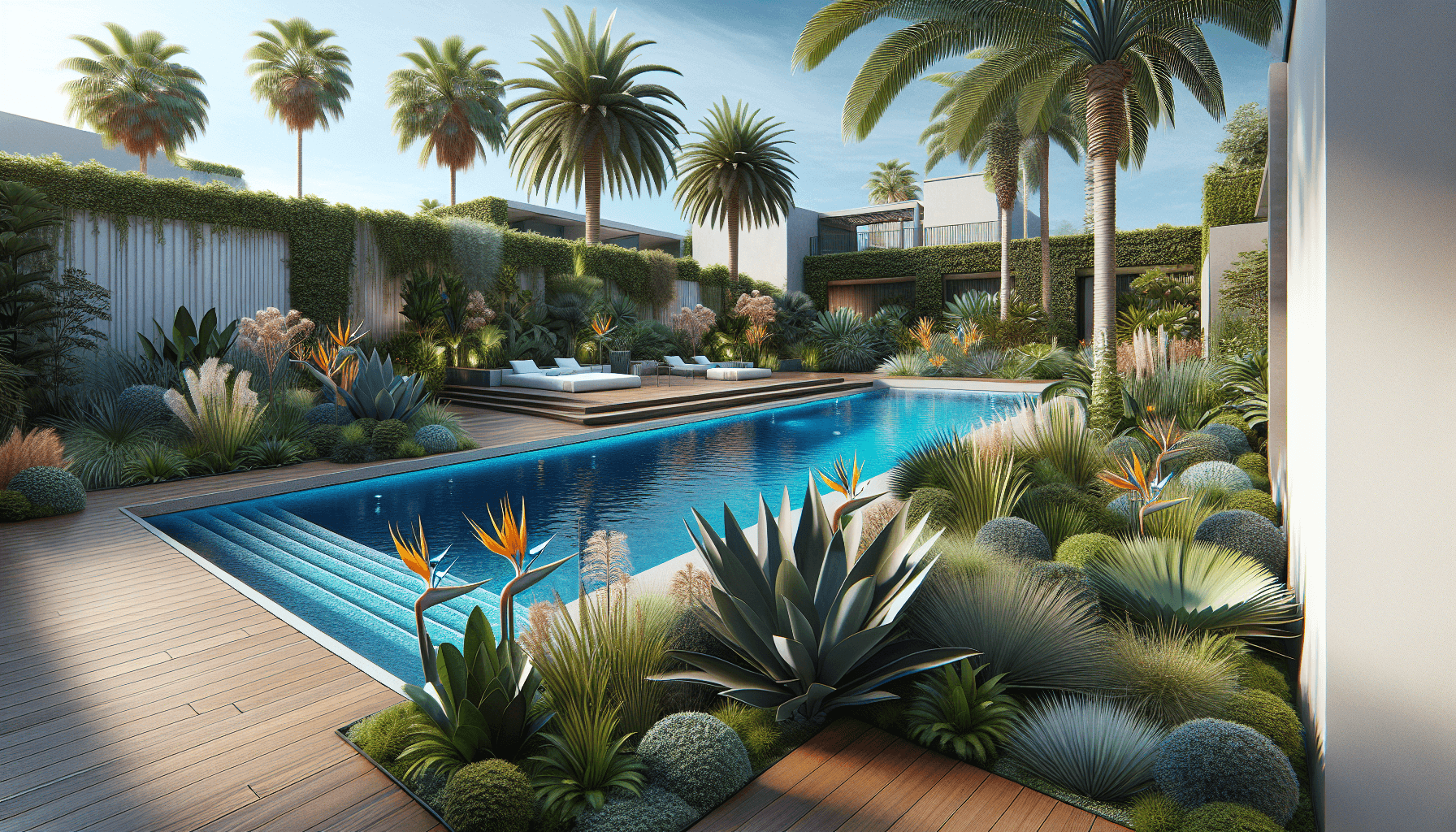Imagine a landscape that hums with life—butterflies dancing through purple lupines, goldfinches feasting on seedheads, and children discovering the magic of California poppies. This isn't a distant wildland; it's a California native meadow, and it can replace your water-hungry, high-maintenance lawn with a living, breathing ecosystem that gets more beautiful with less care.
A native meadow offers seasonal drama, supports local wildlife, requires minimal maintenance once established, and uses a fraction of the water traditional lawns demand. Let's explore how to transform your lawn into a thriving native meadow that celebrates California's natural beauty.
Why Native Meadows Work in California
California native plants have evolved over thousands of years to thrive in our Mediterranean climate. A native meadow brings remarkable benefits:
- Drought resilience with deep root systems that access moisture far below the surface
- Seasonal transformation from spring's vibrant blooms to summer's golden grasses
- Wildlife habitat supporting pollinators, birds, and beneficial insects
- Low maintenance requiring just seasonal care rather than weekly mowing and watering
- Water savings of 75-90% compared to traditional turf lawns
Once established (typically after one growing season), most native meadows require little to no supplemental irrigation during California's dry season, making them the ultimate sustainable landscape solution.
Three Meadow Styles to Consider
The "Soft Lawn" Meadow
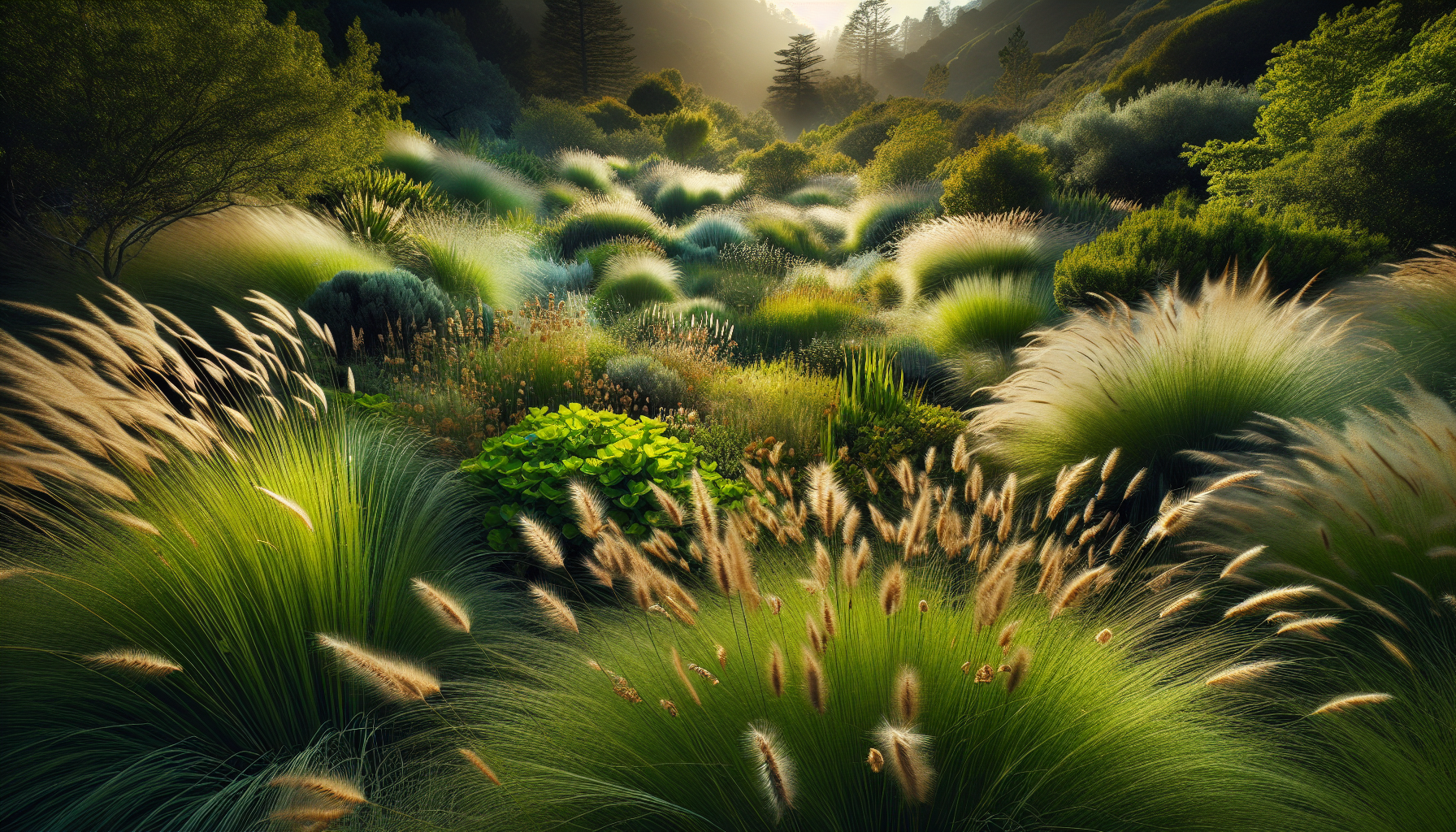
Native grasses create a soft, walkable surface
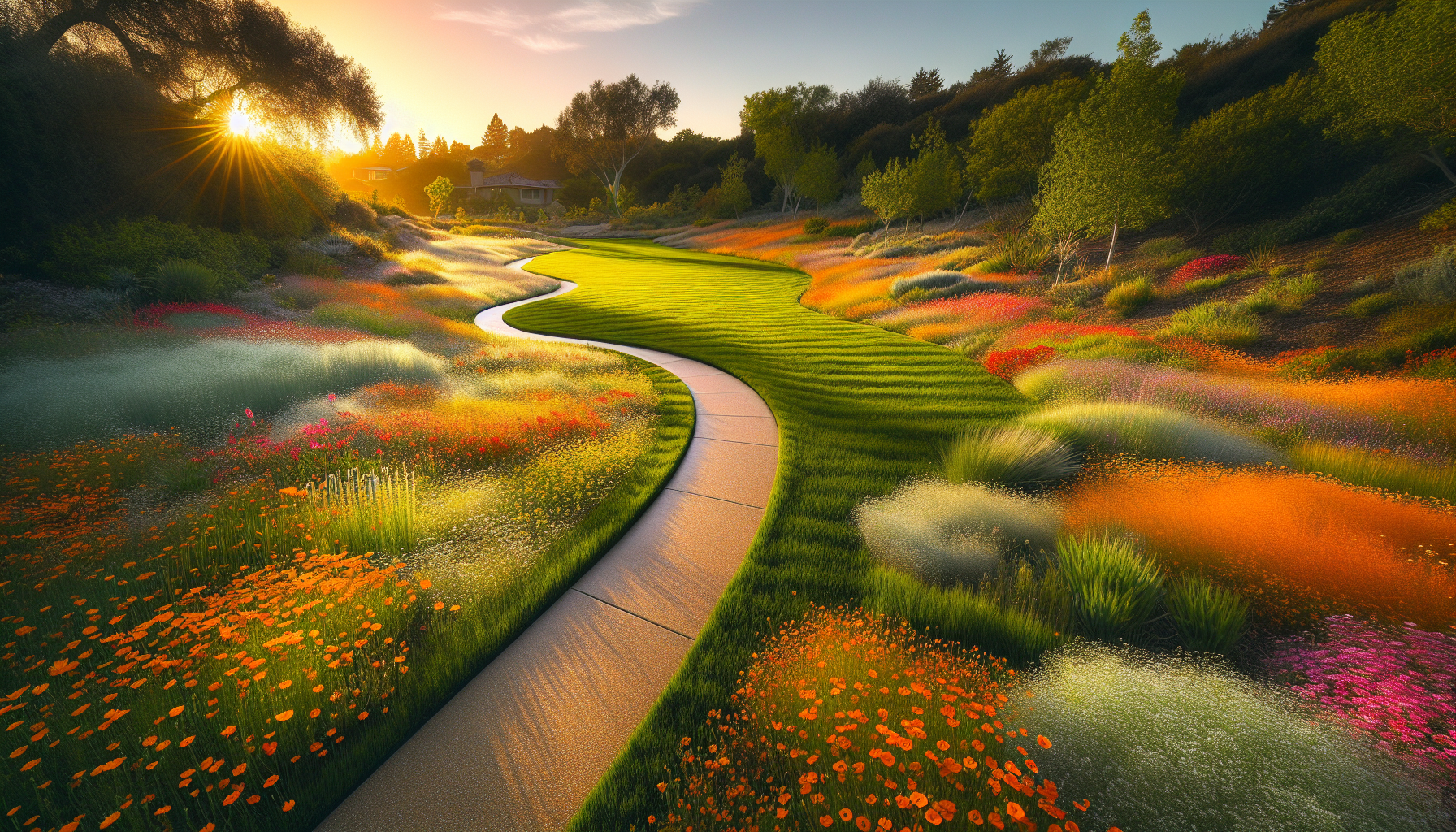
Defined pathways maintain accessibility
Best For: Traditional Aesthetic with Modern Benefits
This approach creates a green, lawn-like appearance while dramatically reducing water and maintenance needs. Perfect for families who want play space and a familiar look with environmental benefits.
Key Plants
Creeping red fescue (Festuca rubra 'Molate') forms a fine-textured mat that stays green year-round and tolerates foot traffic. California field sedge (Carex praegracilis) spreads to create a tough, walkable surface. Add blue-eyed grass (Sisyrinchium bellum) for spring flowers.
Maintenance
Mow 2-3 times per year to maintain a neat appearance. Water deeply once or twice monthly in summer once established. No fertilizing needed.
The "Wildflower Symphony" Meadow
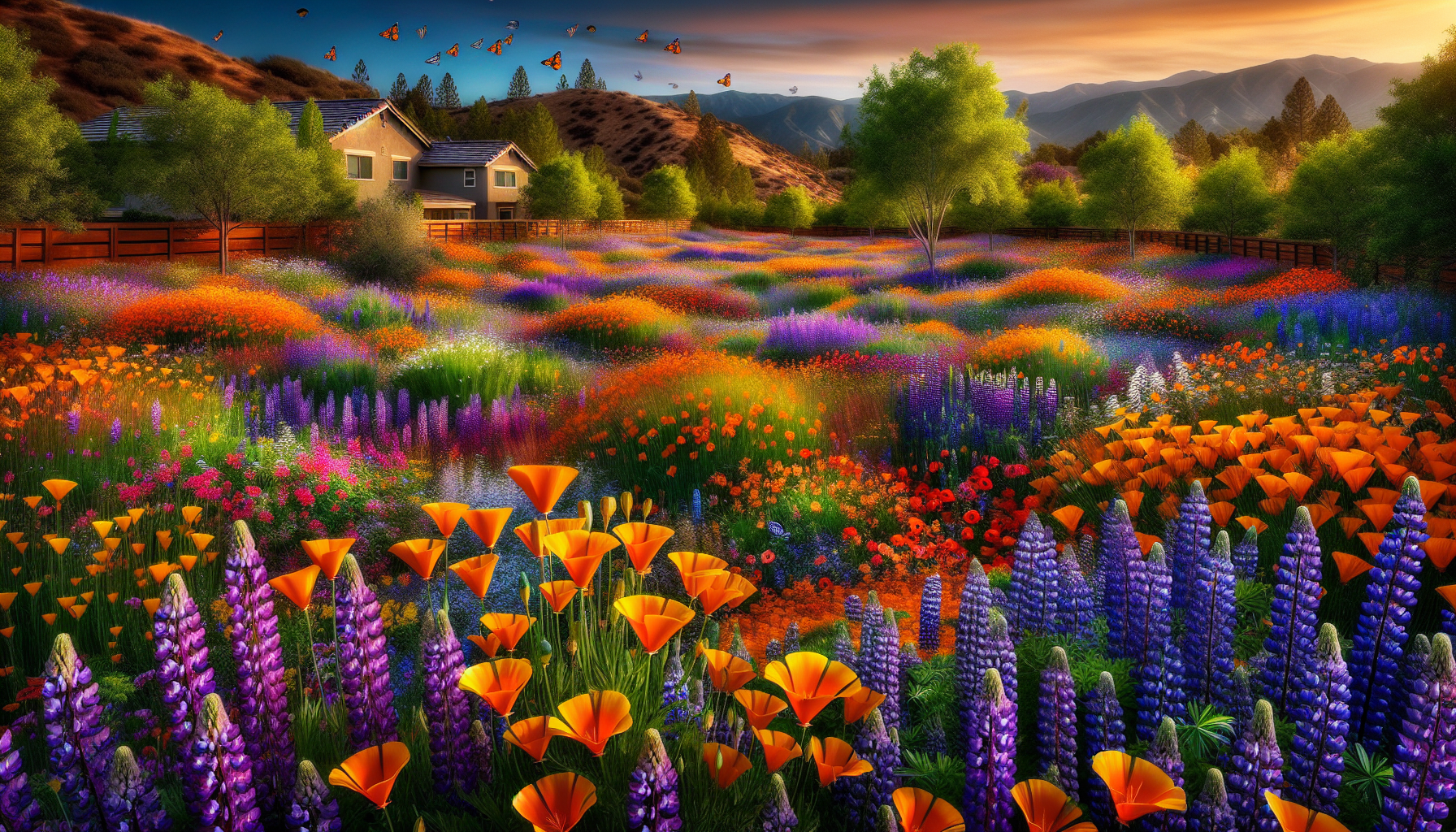
Spring explosion of color

Clarkias provide waves of pink

Multi-season interest
Best For: Maximum Visual Impact
This style delivers spectacular spring color that rivals any flower garden, then transitions to golden grasses for summer and fall. Perfect for areas visible from the street or outdoor living spaces.
Annual Wildflowers
California poppies, lupines, clarkias, tidy tips, baby blue eyes—sow once and many self-sow for years
Perennial Wildflowers
Yarrow, seaside daisies, California aster, sulfur buckwheat for multi-year structure
Structural Grasses
Blue fescue, purple needlegrass, foothill needlegrass create the matrix
Peak Season
March through May for flowers, June through November for golden grasses and seedheads
The "Pollinator Paradise" Meadow
Best For: Maximum Ecological Impact
Designed to provide nectar, pollen, and habitat throughout the year. This style prioritizes biodiversity and creates a landscape that buzzes, hums, and teems with life.
Foundation Grasses
- Purple needlegrass - California's state grass provides structure and bird forage
- Deer grass - Fountaining clumps add dramatic architecture
- Blue grama grass - Unique seedheads attract goldfinches
Pollinator Plants
- Wild buckwheat - Blooms for months with minimal water
- California fuchsia - Late-season hummingbird magnet
- Coyote mint - Aromatic foliage and constant bee activity
- Asters and goldenrod - Essential fall nectar sources

Pollinator meadows support dozens of native bee, butterfly, and bird species
Design Principles for Success

Layer different heights for visual depth

Clear edges signal intentional design
Define Your Edges
The difference between "intentional meadow" and "neglected yard" is all in the edges. Use mow strips, defined pathways, low borders, or edging materials to create clear boundaries. This signals to neighbors that your meadow is a deliberate landscape design, not abandonment.
Create Drifts and Masses
Plant in sweeping drifts rather than rigid rows or singles. Group 5-7 of the same wildflower species together, then repeat those groupings throughout the meadow. This creates rhythm and visual impact while mimicking how plants naturally grow in the wild.
Mix Textures and Heights
Combine fine-textured grasses (fescues, needlegrasses) with bold wildflower forms (lupines, sunflowers). Include low groundcovers (yarrow, California strawberry), mid-height perennials (salvias, buckwheat), and taller accent plants (deer grass, California aster) to create three-dimensional interest.
Embrace Seasonal Change
Native meadows are dynamic, not static. Spring brings vibrant green and flowers, summer transitions to golden dormancy, fall offers renewed growth and late blooms, and winter reveals structure. Design for year-round interest by including plants that peak in different seasons.

Each season brings its own beauty and character
Installation: From Lawn to Meadow
Converting lawn to native meadow requires thoughtful preparation, but the process is straightforward. Follow these steps for best results.
Step 1: Remove Existing Lawn (August-September)
Complete lawn removal is essential for success. Choose one of these proven methods:
Solarization Method
Cover lawn with clear plastic in summer heat for 6-8 weeks. This kills grass, weeds, and seeds without chemicals. Best for patient gardeners and most environmentally friendly.
Sod Removal Method
Rent a sod cutter to strip the lawn, then flip strips upside down. Add 2-3 inches of native soil or decomposed granite on top. Faster but requires more physical work and equipment rental.
Step 2: Prepare Soil (September-October)
California natives prefer lean, well-draining soil—the opposite of what lawns need.
- If soil is heavy clay, amend with decomposed granite or sand to improve drainage
- Avoid compost and fertilizers—natives thrive in "poor" soil
- Rake smooth and remove debris, creating a clean planting surface
- Consider soil testing if you've heavily fertilized your lawn in the past
Step 3: Plant (October-December)
The best approach combines plugs and seeds for fastest establishment and best coverage:
Use Plugs For:
- - Perennial grasses (plant 12-18" apart)
- - Key perennial wildflowers
- - Structural plants
- - Plants you want established quickly
Use Seeds For:
- - Annual wildflowers
- - Filling between plugs
- - Covering large areas economically
- - Creating natural drifts
Pro tip: Broadcast wildflower seeds between planted plugs, then cover lightly with clean sand (not mulch). Rake gently to ensure seed-to-soil contact.
Step 4: Establish (First Year)
Year one is about developing deep roots. Water deeply but infrequently to encourage roots to grow down, not out.
Weeks 1-2: Daily light watering to prevent surface drying
Weeks 3-8: Every 3 days, deeper watering
Weeks 9-20: Weekly deep soaking
After Month 5: Every 2-3 weeks through first summer
Year 2+: Most meadows need little to no summer water; some appreciate monthly deep watering in extreme heat
Year-Round Maintenance
Native meadows require seasonal attention rather than weekly maintenance. Here's your annual rhythm for a thriving meadow.

Spring: Peak bloom and minimal maintenance needed

Summer: Golden dormancy is natural and beautiful
Seasonal Calendar
Winter (December-February): Planning & Planting
The garden is green from winter rains with visible structure. Birds feed on seedheads.
- Overseed bare patches with wildflower seeds (they need cold to germinate)
- Add new plants—winter planting means free irrigation from rain
- Refine edges if plants are creeping where they shouldn't
- Observe and plan for spring additions
Spring (March-May): Peak Bloom
This is payoff time when your meadow becomes the neighborhood showpiece.
- Simply enjoy the display—minimal work needed
- Deadhead spent flowers only if you want extended bloom (optional)
- Leave most seedheads for bird forage and self-sowing
- Hand-pull any aggressive weeds before they set seed
Summer (June-August): Golden Season
The meadow transitions to golden grasses—embrace this natural dormancy.
- The "big cut": Mow or weed-whack to 4-6" height (timing varies by fire regulations)
- Leave some areas unmown for wildlife habitat
- Water deeply once monthly during extreme heat, otherwise let it rest
- Appreciate the seedheads, finches, and summer-blooming perennials
Fall (September-November): Renewal
First rains trigger magical greening and late-season blooms.
- Overseed with wildflowers for next spring's show
- Plant new grass plugs or perennial wildflowers
- Divide overgrown bunch grasses and spread throughout meadow
- Enjoy California fuchsia and late-blooming asters
Common Challenges & Solutions
Neighbor Concerns
Solution: Crisp edges are everything. Use mow strips, defined pathways, or low borders. Add a small sign: "Pollinator Habitat" or "California Native Meadow." Education and clear boundaries change perceptions quickly.
Summer Dormancy Worries
Solution: Golden summer grasses are natural and beautiful—embrace them. Add strategic evergreen perennials like California buckwheat and coyote mint for year-round green. Vary mowing patterns for visual interest.
Weed Competition
Solution: Many annual weeds disappear as natives establish. Remove perennial weeds (bindweed, oxalis) promptly. Dense planting prevents weed establishment. Hand-pull rather than disturb soil with tillage.
Sparse First Year
Solution: This is normal. Natives spend year one growing roots, not shoots. Take monthly photos to track progress. Fill gaps with additional wildflower seeds. By year two, plants will fill in dramatically.
Benefits Beyond Beauty

Native meadows support local ecosystems

Educational opportunities for all ages
Dramatic Water Savings
Once established, native meadows use 75-90% less water than traditional lawns. A typical 1,000 square foot lawn can require 20,000 gallons of water annually. The same space as a native meadow? As little as 2,000 gallons, mostly in the first year.
Wildlife Haven
Native meadows support 3-5 times more insect species than lawns, which cascades up the food chain to support birds, lizards, and other wildlife. Homeowners regularly report seeing butterfly species they've never seen before, along with increased bird activity and beneficial insects.
Living Education
Children who grow up with native meadows develop deep ecological understanding. They learn plant identification, insect behavior, seasonal cycles, and ecosystem connections through direct observation and interaction—environmental education happening naturally in their own backyard.
Community Connection
Native meadows become neighborhood conversation starters and catalysts for change. When one homeowner converts their lawn to meadow, neighbors notice, ask questions, and often follow suit. Many neighborhoods have created habitat corridors as multiple homeowners make the switch.
Getting Started with Your Meadow
Your Native Meadow Journey
-
1.
Start Small
Begin with a test area—parking strip, side yard, or one section of lawn. Use it as your learning laboratory before converting larger spaces.
-
2.
Choose Your Style
Decide which meadow approach fits your needs: soft lawn, wildflower symphony, or pollinator paradise. Each has different maintenance and aesthetic characteristics.
-
3.
Prepare Thoroughly
Complete lawn removal is essential. Don't skip soil preparation. These steps determine long-term success more than any other factors.
-
4.
Plant in Fall
October through December is ideal. Winter rains provide free irrigation, and plants establish before summer heat arrives.
-
5.
Trust the Process
Year one builds roots, not necessarily beauty. By year two, your meadow will fill in dramatically. By year three, you'll wonder why you waited so long.
Converting your lawn to a California native meadow isn't just about water conservation or maintenance reduction—though those benefits are substantial. It's about creating a landscape that gives back, that buzzes with life, that changes with the seasons, and that connects you more deeply to the place you live.
Native meadows prove that sustainable landscaping doesn't require sacrifice. Instead, it offers gifts: more beauty, more biodiversity, more time, and more meaning. Your lawn is waiting to become something extraordinary. The ground is ready to hum—are you ready to listen?
